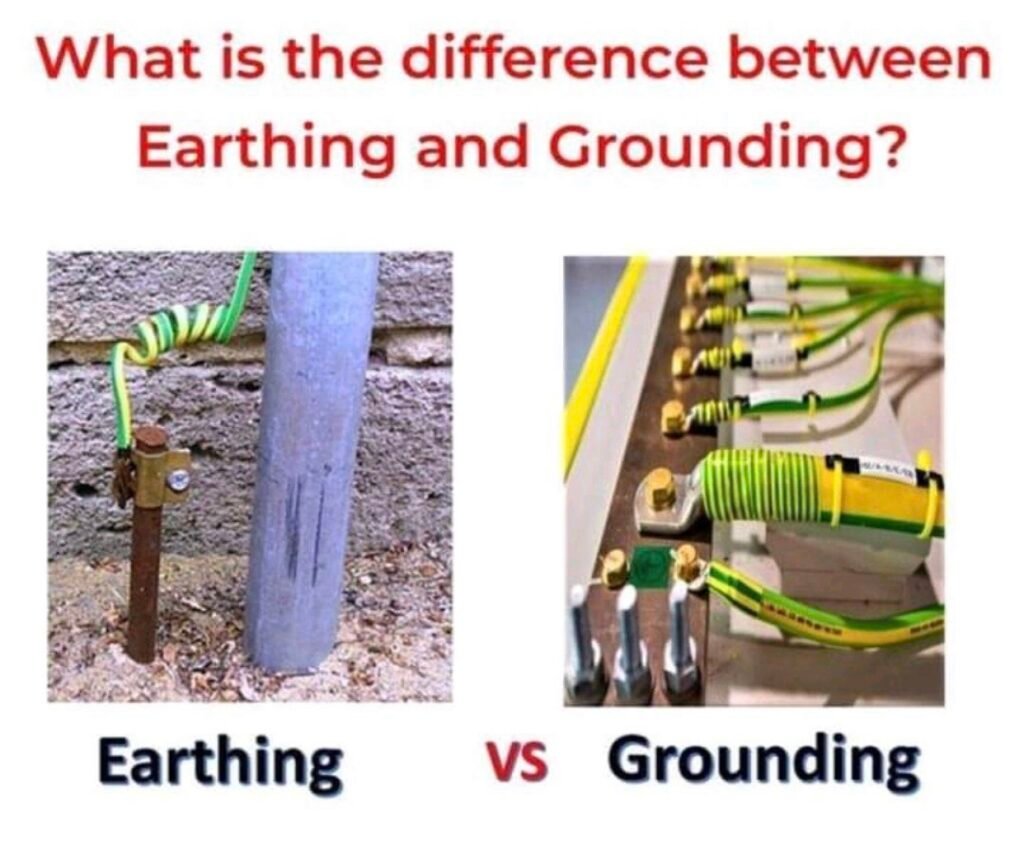Here is a detailed explanation of the differences between earthing and grounding in the context of electrical safety. Here’s a further breakdown:

Earthing:
- Purpose: Earthing involves connecting a conductive part of an electrical circuit or equipment to the earth (soil). The primary purpose of earthing is safety. It ensures that in the event of a fault, such as a short circuit, fault currents have a safe and low-resistance path to dissipate into the ground.
- Safety Focus: The primary focus of earthing is to protect people and equipment from electric shock hazards. It helps prevent dangerous voltages from appearing on the surfaces of equipment and enclosures, reducing the risk of electric shock to individuals. Additionally, earthing facilitates the proper operation of overcurrent protection devices like circuit breakers, as they can detect and interrupt faults more effectively.
- Example: In residential wiring, the metal casing of an appliance is connected to the earth through a grounding wire. If a fault occurs, such as a short circuit, the fault current will flow safely through the grounding wire into the earth, preventing the appliance’s casing from becoming live and endangering the user.
Grounding:
- Purpose: Grounding involves establishing a reference point (ground) that serves as a zero voltage reference for electrical circuits. While safety is still a consideration, the primary purpose of grounding is to ensure the stability and proper functioning of electrical systems and devices.
- Safety Focus: Grounding plays a role in safety by stabilizing voltage levels and reducing the risk of voltage fluctuations, which can lead to equipment damage, data loss, and even fires. It also helps prevent electromagnetic interference (EMI) by providing a path for unwanted currents to dissipate harmlessly into the ground.
- Example: In electronic devices and computer systems, grounding helps discharge static charges that can accumulate on surfaces. Without proper grounding, these charges could build up and damage sensitive components or disrupt the operation of the equipment.
In summary, while both earthing and grounding involve connecting to the earth, their primary purposes and safety focuses differ. Earthing is primarily about protecting people and equipment from electric shock hazards by providing a safe path for fault currents. Grounding, on the other hand, is more about stabilizing voltage levels, reducing interference, and ensuring the proper functioning of electrical systems and devices. Both practices contribute to overall electrical safety and system integrity.